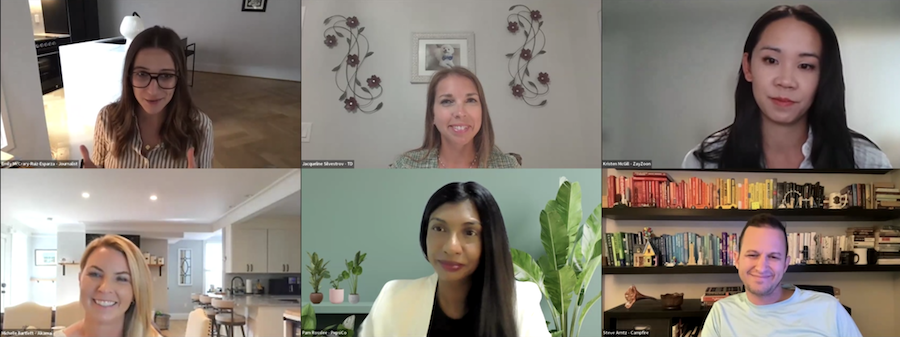How to Leverage AI to Make Room for the Important Stuff
With HR technology revolutionizing how organizations operate, companies that embrace innovative tools can boost employee engagement, streamline processes, and strengthen their bottom line. At From Day One’s November virtual conference, Sonya Echols, vice president of HR at Comcast, shared her insights on HR technology in a fireside chat moderated by Denver Post reporter Megan Ulu-Lani Boyanton.Echols highlighted strategies for integrating technology that elevates HR from a traditional administrative role to a strategic business partner. “There are just so many choices that people have today,” Echols said. “And really trying to differentiate ourselves is something that we continue to focus on.”At Comcast, the focus on employee development informs their approach to technology: first, choose the right tools, then integrate them effectively. “Making sure that we have a robust learning and management system that meets the needs of our teammates is key,” Echols said. Choosing the Right TechnologyThere are three critical factors to consider when introducing HR technology to an organization, says Echols:Return on Investment (ROI): Investing in HR technology should bring significant value to the organization. "There’s so many things out there that seem exciting, and we all get distracted by the shiny new thing,” Echols said. “But if we’re going to really invest in HR technology, we need to make sure that it’s going to pass the sniff test around ROI.” Organizations must assess whether a new tool will truly enhance operations and deliver measurable benefits.Must-Have vs. Nice-to-Have: HR teams must prioritize essential tools over optional ones. “There are things that we as HR really, really need to be investing in, and then there’s things that are nice to have,” Echols said. By focusing on must-haves, organizations can free up time and resources for high-impact work. The goal is to choose technology that allows HR to concentrate on strategic tasks rather than administrative processes.Buy or Build?: Deciding whether to purchase or develop HR technology in-house is a crucial step. Echols encouraged companies to weigh the pros and cons of each approach. “When you think about buying HR technology off the shelf, you need to ask yourself, ‘Is this going to be customizable at all, or can I configure this at all?’ Even that could be a little bit costly,” she said. Organizations must also consider whether they have the technical expertise to manage custom solutions.Additionally, Echols stressed the importance of asking the right questions when evaluating technology vendors. “As soon as we deploy this, is it going to be outdated? Is there a newer version coming out? When are there upgrades that we will automatically be able to get from this vendor?” Understanding these dynamics is essential for making informed decisions and avoiding unnecessary expenses.Sonya Echols of Comcast, right, spoke with Megan Ulu-Lani Boyanton of the Denver Post (photo by From Day One)By focusing on ROI, prioritizing must-have solutions, and carefully evaluating the decision to buy or build, organizations can ensure their HR technology investments are effective and future-proof.Thoughtful Integration Is KeyHaving the technology is one thing—integrating is something entirely different. Companies must approach integrating new technologies of any kind as thoughtfully as possible, starting with trust.A culture of trust is imperative. Echols says this should be developed constantly over time. When it comes to building trust during integrating a new technology, open communication is crucial. “Your communication cadence with your folks is also going to be important in building that trust,” Echols said. If you’re not open with employees, people are going to be afraid to ask questions. “But if you let people know, ‘Hey, this is where we’re going, and here’s how we’re going to get there,’ people are receptive to that.”Echols also highlighted the importance of involving end-users early in the process. “Getting more of the users involved sooner is probably the biggest lesson learned,” she said. “Having the people who are going to use it day in and day out get their hands on it as quickly as possible is key.”Interactive training programs, tailored to different user groups, help ease the transition. Additionally, limiting workarounds ensures employees adopt the technology rather than bypassing it. “The number one thing that helps folks adopt new tools is to limit the workarounds,” Echols said. “If people have no choice but to use it, and you show them the way and gently nudge them, they’ll get there.”Change management plays a critical role in integration. Organizations must understand potential resistance points, communicate frequently, and show employees how the technology will improve their work lives. By treating the rollout like a marketing campaign—tailored to address user pain points—companies can foster a smoother adoption process.Helping Employees Take OwnershipOne great feature of modern HR tools is that they allow employees to take ownership of their experiences, creating room for HR teams to focus on strategic initiatives.“When we think about HR technology, most people think about a human capital management system, right? We use Workday here at Comcast,” Echols said. “It has helped us in HR a lot by empowering our employees, both business leaders and non-people leaders, to own their experience. They can go in, they can look at their information at any time.” Instead of HR personally handling every employee request, technology enables individuals to access information themselves. This evolution is reshaping how HR is perceived within companies. “I think a lot of technology is moving toward self-service versus the white-glove service that we in HR typically provide,” said Echols. “Now that is shifting and evolving so folks can self-serve and allow HR to really be seen as business leaders who happen to sit in HR seats.”By empowering employees with self-service tools, prioritizing strategic technology investments, and focusing on seamless integration, companies can elevate their HR functions from administrative to transformational. Companies should approach HR tech adoption thoughtfully by focusing on ROI, scalability, and trust-building to unlock its full potential.Carrie Snider is a Phoenix-based journalist and marketing copywriter.





